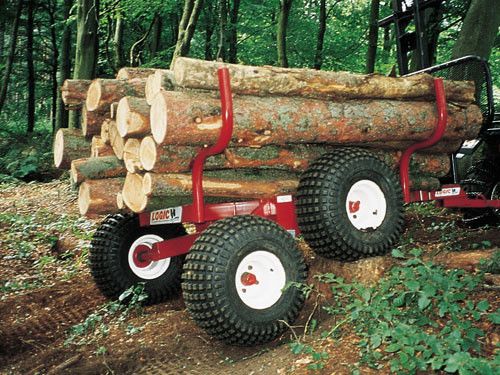By Kevin Smith / June 16, 2019 July 8, 2021
When we hovered into the forestry forums, we’ve noticed people having trouble dealing with one particular thing. And that’s the after-feeling skidding of logs.
To be precise, they get in a dilemma in between two of the most practiced manner- skidding logs with ATV, and skidding logs with the tractor. You can use both of these skidding logs. But what will be best for you depends upon the amount of work needed?
Other than vehicle choosing, everything else is almost the same. You can install arches and winches in both ATVs and Tractors. After that, all you need to do is pulling.
So, let’s figure out what’s the best vehicle for you how to skid logs with that-
SKIP AHEAD
You know, the age of horse logging or handy logging is long gone. Now we have automotive and vehicles to do that on our behalf.
If you haven’t chosen a vehicle yet, then you still have time to get the right one for you. And if you already have bought a vehicle, then you can always switch to the one best for you.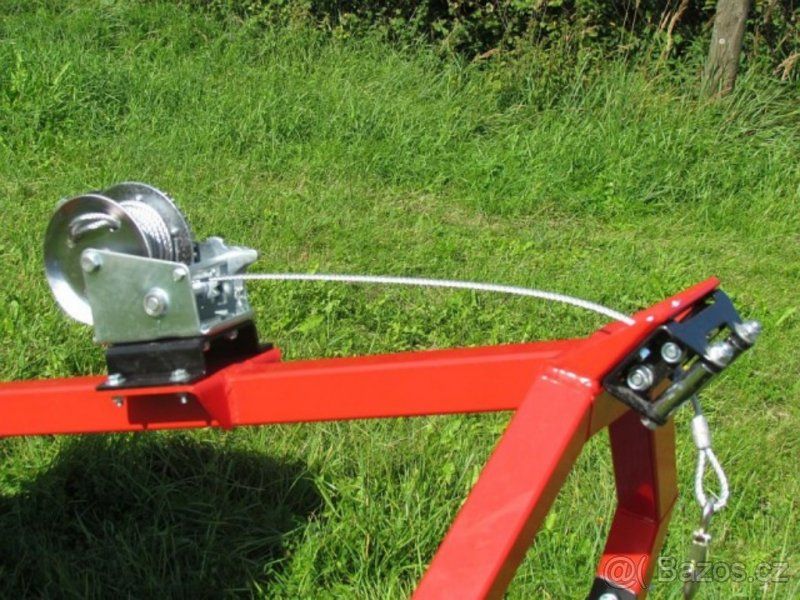 Just wait for the right opportunity.
Just wait for the right opportunity.
So, what’s your situation? Do you have a small budget? How much logging are you expecting? For how long do you want to use? What are your log sizes?
If your budget is small, then that a point for ATVs. One point for tractors if you have a long-term project. Because after some years of regular use, ATVs tend to lose performance. Tractors are way better at this.
Your vehicle HP will determine whether your vehicle is good for pulling long and heavy logs or not. But the norm is to use tractors for skidding logs when the load is heavy.
In reality, a 20 HP tractor can pull a 30-inch diameter and 12 feet long log with some techniques and attachments. But an ATV with four-wheel drive can easily pull that kind of load. So, in case of power ATV gets the point (In the case of big tractors the scenario is completely opposite).
Based on these factors choose your vehicle. Now that you have a tractor or an ATV, it’s time to go through the skidding process.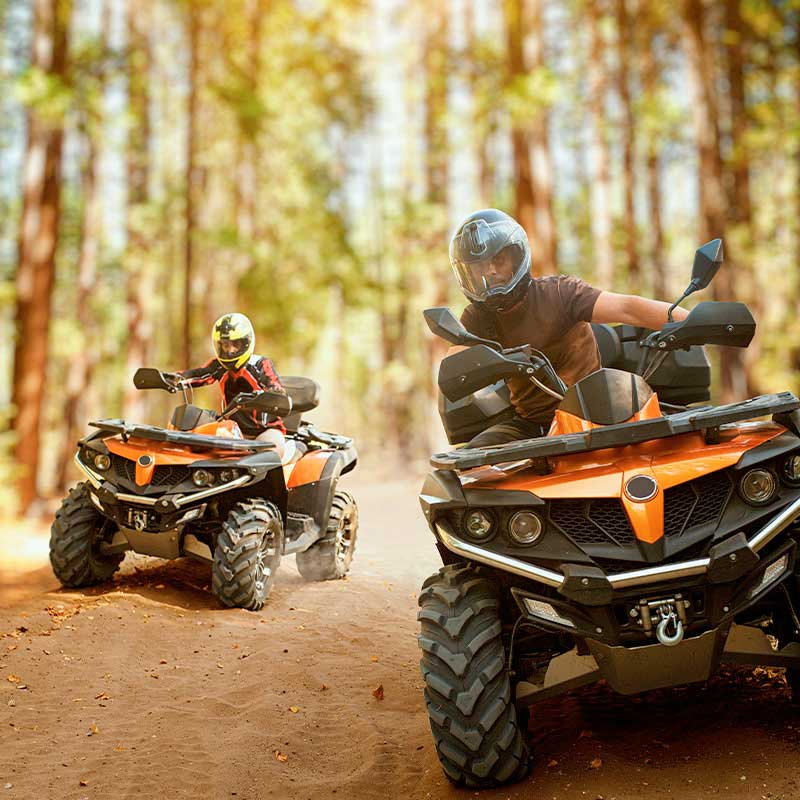
As we’ve stated before, skidding logs with ATV and skidding logs with tractor are almost the same. For both vehicles, you need to choose what will hold up your logs while skidding.
2 common tools needed for this process are log arches and winches. Now let’s explore the use of both these tools-
With log arches, you can hold up your log in a frame supported by 2 axles. As a result, you get-
Besides these advantages, there are more. Your tractor or ATV will be safer with the use of log arches. You will be able to steer more easily. Moreover, your chances of getting a rollover accident will decrease. Wheels were invented because there were many problems with dragging. So, try out arches for logging.
Here are a few of our recommended best log arches that you can stick to for your next purchase-
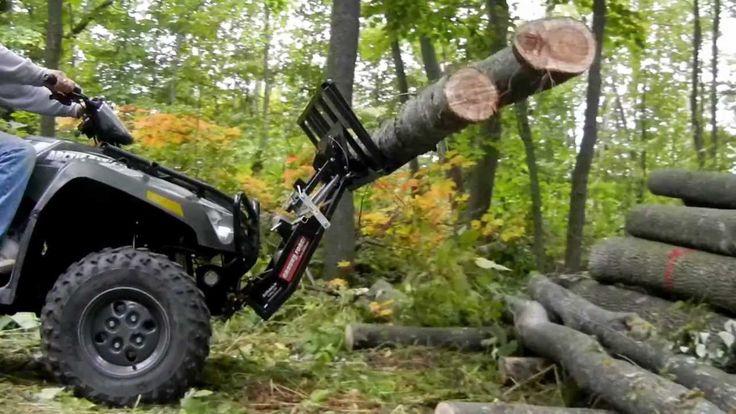 Using Winches
Using WinchesLet’s imagine that your log is in a patch of timbers. Or worse, it might be at the bottom of a ravine. Most of the time it’s hard to reach trees in a trail with log arches. In these situations, only winches can save your day.
Just attach the winch to your chainsaw and pull that log towards your ATV or tractor. The best part about log skidding winches is that the winch frame bears all that pulling force. So, the chain saw remains stress-free.
If you spend a few bucks extra, then you can get the remote-control winches. You won’t need to walk back and forth between the vehicle and log for adjusting.
In case you are looking for the best ATV winch, here are some selected list by the professionals–
 You can wrap this cable or chain around the end of a log. When you reel in the winch line, the choker pulls tight. The drawback for the chokers is, it’s difficult to wrap around a log when it lies flat on the ground.
You can wrap this cable or chain around the end of a log. When you reel in the winch line, the choker pulls tight. The drawback for the chokers is, it’s difficult to wrap around a log when it lies flat on the ground.
Here are a few of our recommended best logging choker that you can stick to for your next purchase-
Logging tongs are better in this situation. You just have to drop the tongs on the log and set the hooks. Hallelujah! You’re ready to pull. But logging tongs tend to come off once the pulling begins.
Here are a few of our recommended best skidding tongs list-
You can try out the Timber Tuff TMW-54 log grapples as the ultimate solution.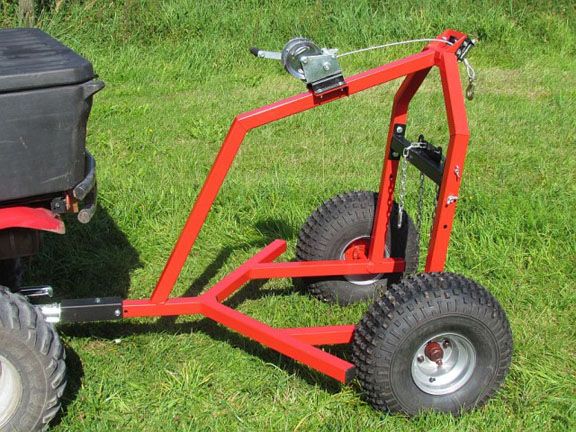 But it is a bit heavy on both cost and weight.
But it is a bit heavy on both cost and weight.
Skidding logs with ATVs can bring real damage to the ground and the log itself. It’s not unnatural for a log to plow on the ground or hurdle on a stump. In this situation skidding sled comes to the rescue.
The skidding sled is a heavy cone of plastic that fits onto the end of the log. This allows the log to slide over rocks and other obstructs easily.
Most of the pro loggers advise on using both log arches and winches. They use winches to pull the log to the vehicle. Afterward, they use the arches to pull logs to the end destination.
We have gathered up some recommendations and safety measures that would help you while pulling logs with tractor or pulling logs with ATV. So, let’s go through those-
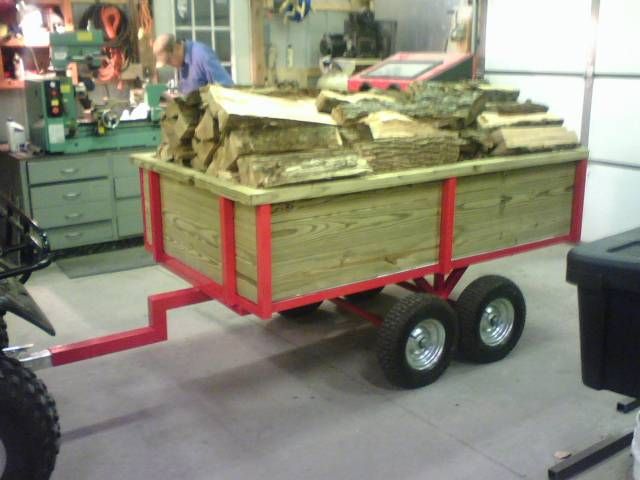
These recommendations will make your log skid pretty easy.
No matter how easy it seems, skidding logs with tractor or ATV is pretty hard. But we believe that by now you know everything to make this task easy.
Good luck and Happy Woodworking!
JavaScript is disabled. For a better experience, please enable JavaScript in your browser before proceeding.
For a better experience, please enable JavaScript in your browser before proceeding.
Hi everyone, I was wondering if anyone could share their ideas or proven ways of getting the logs out of the woods with the least amount of damage, and dirt on the log.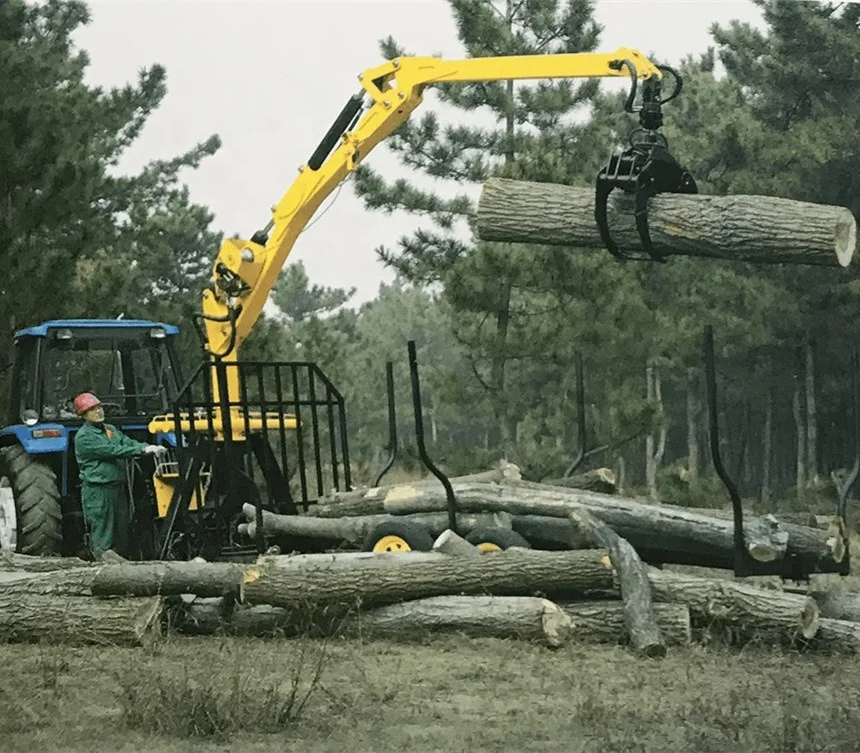 Currently I am just useing a strap and towing the logs out. It works as my ATV can pull anything, but then it's dirty as hell, and there's a path cut into the ground that could hold water. So, any ideas?
Currently I am just useing a strap and towing the logs out. It works as my ATV can pull anything, but then it's dirty as hell, and there's a path cut into the ground that could hold water. So, any ideas?
It seems you will need a log arch.
There are some log arches that will lift the from end of the log and minimze the impact you have on the ground.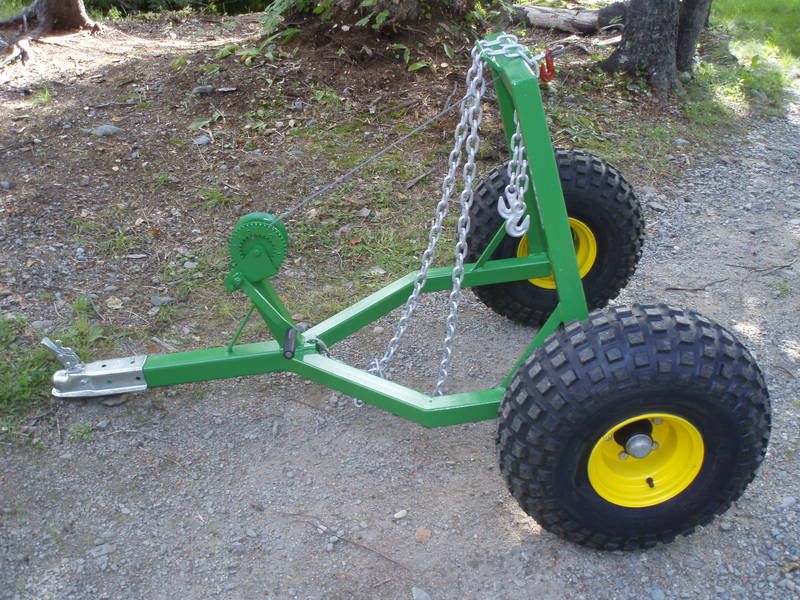 To me they seem a bit cumbersome to move through the woods. Another option is to get a nice choke cable from Bailey's ($25), and wait for the ground to freeze so as to keep from disturbing the soil.
To me they seem a bit cumbersome to move through the woods. Another option is to get a nice choke cable from Bailey's ($25), and wait for the ground to freeze so as to keep from disturbing the soil.
If the ground disturbance is what really bothers you, have you considered a drag for your ATV? You could use the drag over the log trail when you are done.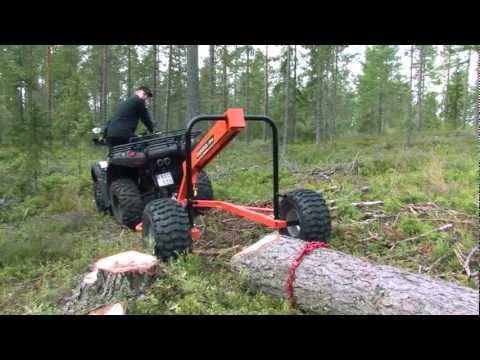
In order to avoid dirty logs, you need to get them off the ground. Using an atv, you can use a log arc, or load them on a trailer.
Definitely need a log arch. Some models lift the leading end and drag the tail, others elevate the whole log ( up to 20 foot).
Fill me in on why.
skid coneNovaJack
Log arch is what I use behind my atv.View attachment 200224
Two options.
Arch or trailer.
Trailers get the bucked up rounds out clean, but you'll work harder.
Stay safe!
Dingeryote
Personally I would go with a trailer, that way it be a multi-task investment. A trailer comes in handy for a variety of uses, whereas a log arch is very limited in performing any other task. Just buck your logs up and load the rounds on the trailer and pull them out.
Buy a big enough trailer to do the job, it could double as a trailer to load your 4-wheeler on to tow behind the truck.
I built a small trailer last year just for this purpose. I made it exactly the same width as my four wheeler so I could manuvear it through the timber. I carry my saws in a saw box on the back rack. Works out perfect for me Trailer holds about 12 decent size rounds.
I made it exactly the same width as my four wheeler so I could manuvear it through the timber. I carry my saws in a saw box on the back rack. Works out perfect for me Trailer holds about 12 decent size rounds.
I made a choke chain for my atv. wrap the chain around the log and pull the log out of the woods onto the logging road. buck it up and throw it in the back of the truck.
I would agree with what others have posted.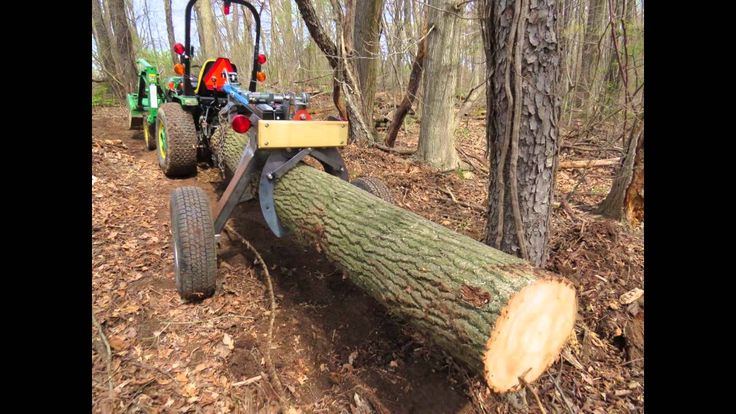 Either a log arch or a trailer. I went the route of the trailer, but since they logged over 1100 large mature trees from the woods that I cut in last winter, I haven't had a need to get down into to the ravines with my ATV to try the trailer out. Words of caution on the trailer. Be aware of how much you have on it, and how easy it is to tip over because it can take the ATV and you with it when it goes.
Either a log arch or a trailer. I went the route of the trailer, but since they logged over 1100 large mature trees from the woods that I cut in last winter, I haven't had a need to get down into to the ravines with my ATV to try the trailer out. Words of caution on the trailer. Be aware of how much you have on it, and how easy it is to tip over because it can take the ATV and you with it when it goes.
The reason that I chose a trailer instead of building a log arch was A - Cost, and B - Usefullness. I bought the trailer used and made a few mods to it. I have about $150 wrapped up in it. It just is big enough to haul my ATV on, which makes it very functional for me as I hate running the ATV up a set of ramps into the bed of my '93 F250. Get a little snow or even some rain and the ATV doesn't always like to stay on the ramps. On the down side, it has a 4' wide deck, and the 14" wheels stick out another 8 or 9" on each side, so its a lot wider than my ATV. It only has a 1K axle (or at least that's all I'll put on it) so it's limited to how much it can acutally haul by the axle, not the deck.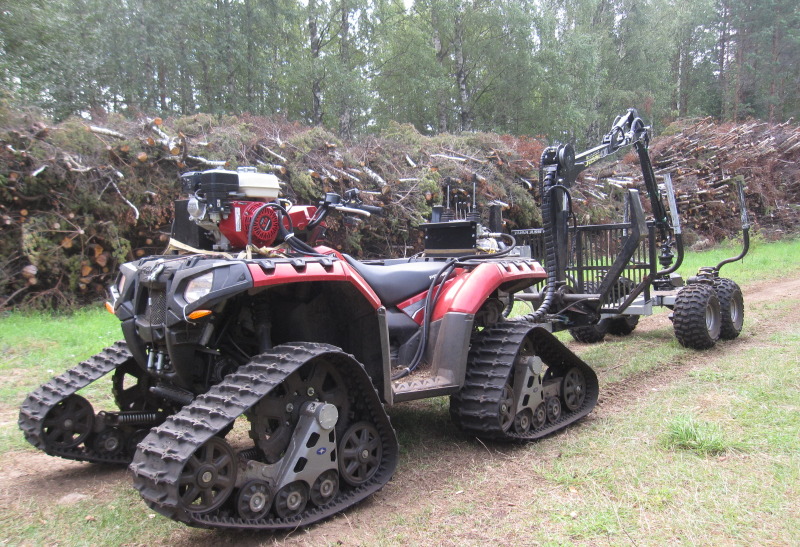 Also, it's easy to run the wheels into stuff when I'm pulling it through the woods trying to go around trees. At that point it becomes a real pain to get everything straightened back out and moving again. What ever tree I hit is now stuck between the ATV and the trailer with little or no room left for me to turn and get things clear. All in all the trailer works well so long as there's adequate room to get it in and out, and so long as the terrain isn't super rough or too much of an incline. You can also go with one of the smaller trailers made to pull behind a lawn tractor, but you're going to need to take a lot of trips to fill up a truck bed with one of those.
Also, it's easy to run the wheels into stuff when I'm pulling it through the woods trying to go around trees. At that point it becomes a real pain to get everything straightened back out and moving again. What ever tree I hit is now stuck between the ATV and the trailer with little or no room left for me to turn and get things clear. All in all the trailer works well so long as there's adequate room to get it in and out, and so long as the terrain isn't super rough or too much of an incline. You can also go with one of the smaller trailers made to pull behind a lawn tractor, but you're going to need to take a lot of trips to fill up a truck bed with one of those.
I really wanted a log arch, and still do, but looking at them I can tell that I'm goign to have over $200 in one plus a lot of time. I'd LOVE to build one just for fun, but I just don't have the time, and don't have $200 to put into materials for somethign that's only able to be used for cutting firewood. If I were cutting on my own land, then I would certainly build one and just haul the logs up to the barn lot for storage until I was ready to cut them.
I also looked into the log cones/sleds, and those looked like they had some promise. You'll still have dirt in the bark which is going to be hard on your chains, but the cone/sled keeps the front of the log from digging in making it easier to drag. I've heard of guys using the hood off an old car, or modifying a plastic 55 gal drum do do this as well. I opted against it because I still had to drag the logs, and I still had to cut dirt packed wood.
I have and use an 2004 arctic cat 650 atv, started as an le model with heavy duty bumpers. I mosified the rear frame/ bumper area and have a 2500lb warn at winch it there. So I have front and rear winches. I use the rear winch and a short choke chain to pull logs in close to atv, usually raising front of log off of ground in process. I have dragged logs 18 in and 25 ft long with this setup.
So I have front and rear winches. I use the rear winch and a short choke chain to pull logs in close to atv, usually raising front of log off of ground in process. I have dragged logs 18 in and 25 ft long with this setup.
It will make marks on the trails but not too bad. I also agree with waiting til dry season or winter when ground is cold,, logs move easier. Good luck
How about a small forwarding trailer, that's what I use. If you can pull alongside the trees right where you drop them you could load em up dirt free. They're easier to buck up because they're off the ground and it's way more productive than a log arch where you're pulling one or two trees at time.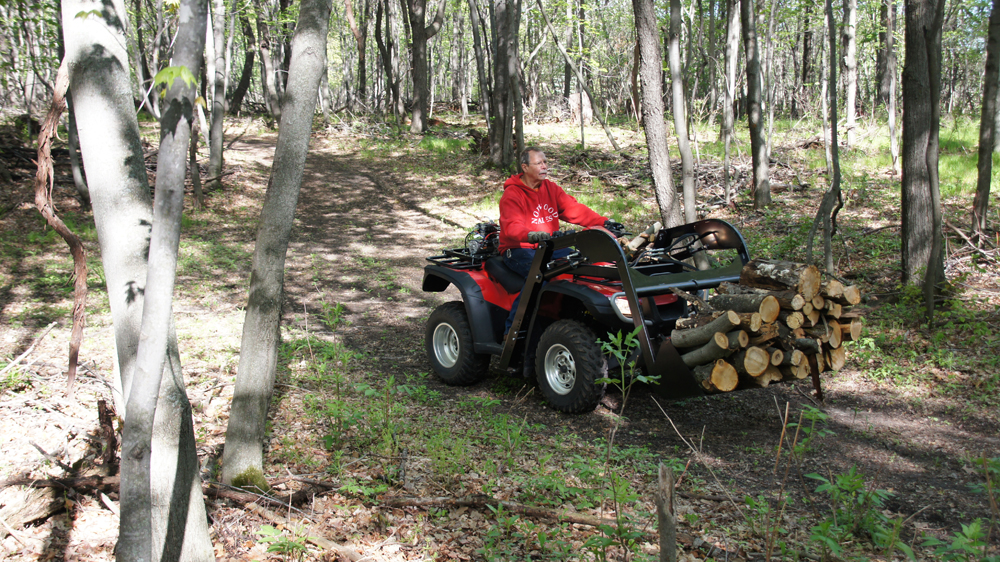 You could pull a descent sized load depending on your terrain.
You could pull a descent sized load depending on your terrain.
I pull the trees out, buck them into 9' or 15' lengths and then load them. I don't worry about the dirt too much, just watch out for little rocks stuck in the bark. I usually get two to four loads bucked up into rounds before I need to give the chain a little tickle.
Chumwithrum can you take a picture of that hitch? I think i know what they did to lessen the shock of starting and stopping.. just wanting to make sure..
BTW Nice trailer and thanks for sharing pictures.
chumwithrum said:
How about a small forwarding trailer, that's what I use.
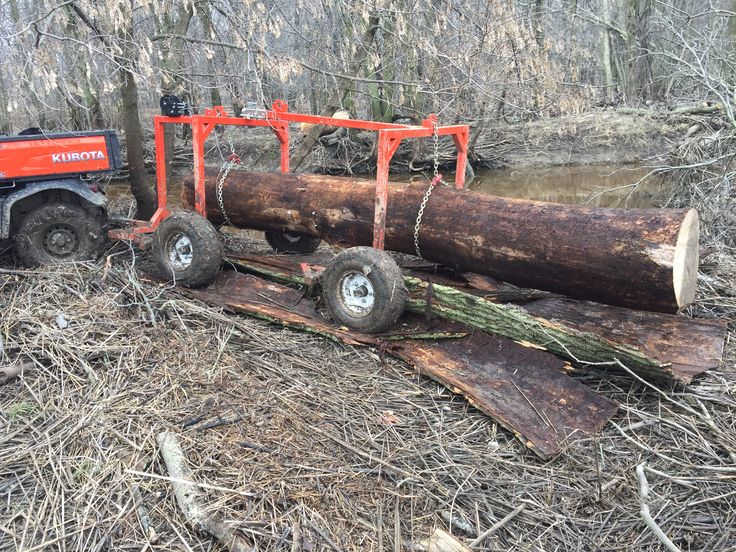
Click to expand...
Really nice looking trailer. Is this a unique trailer, or just something I have never known to look for?
Would like to see a photo sequence of how you load those upper logs.
Philbert
Garmins dad said:
Chumwithrum can you take a picture of that hitch? I think i know what they did to lessen the shock of starting and stopping.. just wanting to make sure..
Click to expand...
It's just a pipe with a couple of stiff springs on it that fits inside another pipe. It also rotates 360* in case the trailer rolls over it doesn't flip the four wheeler too.
It also rotates 360* in case the trailer rolls over it doesn't flip the four wheeler too.
Are thinking about building one?
Philbert said:
Really nice looking trailer. Is this a unique trailer, or just something I have never known to look for?
Would like to see a photo sequence of how you load those upper logs.
Philbert
Click to expand...
I got it from novajack.com it also has a removable dump box.
There is some more pics here http://www.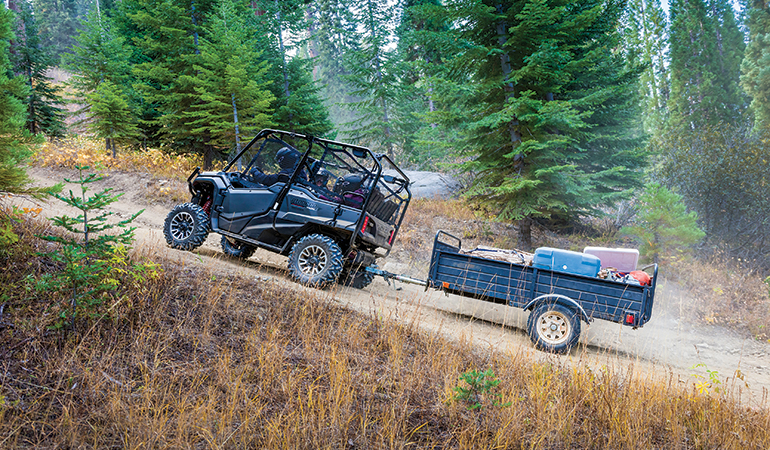 arboristsite.com/firewood-heating-wood-burning-equipment/143850-4.htm
arboristsite.com/firewood-heating-wood-burning-equipment/143850-4.htm
I usually save the smaller logs and load them last. When they're too heavy to load by hand I winch them on the same way as in the pictures, except the chain hooks into the holes at the top of the stakes. I'll get some pics the next time I go out.
Buying a Wood Splitter?
101112
sean donato
Best Way to Get Rid of Oaks on Piece of Land?
lone wolf
Huskee 35 ton Log splitter problems.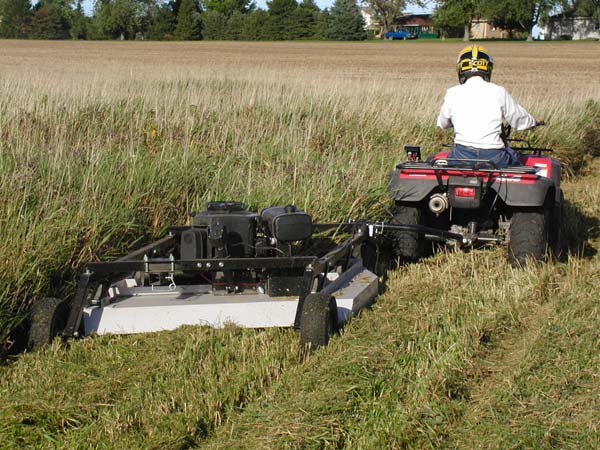
JarneyD
Problem with my Double bar 10 HP elect.
2
TRTermite
My Solo 681 soiled the sheets
2
guysmiley
Share:
Facebook Twitter Reddit Pinterest Tumblr WhatsApp Email Share Link
Scrounging firewood
Firewood, Heating and Wood Burning Equipment
How I baby my 2 stoke motors. ... 30-1 instead of 50-1
... 30-1 instead of 50-1
Chainsaw
Redmax two stroke oil for a reasonable price
Chainsaw
D
Want to Sell Too many chainsaw bars!
Chainsaw Parts & Tools
How hot should hydraulic fluid get in a splitter?
Firewood, Heating and Wood Burning Equipment
D
Want to Sell Stihl 361 chainsaw PHO 375 + shipping
Chainsaws
brakes? we don't need brakes.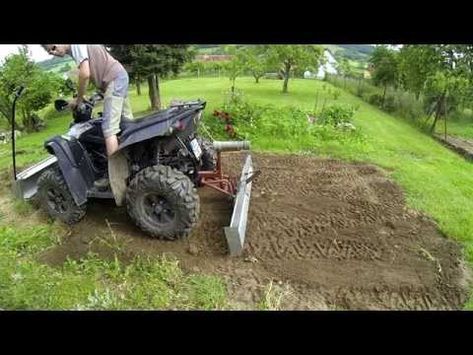 ..
..
Firewood, Heating and Wood Burning Equipment
Show us your stumps!
Picture & Video Forum
Top
ATVs most often choose two-seater models - they are safer on climbs and descents, stable in turns, and in the absence of a passenger they allow you to carry more cargo and fuel. Single models are distinguished by their compactness and low weight, but not everyone will feel the difference in 15-30 cm in length and 50 kg in off-road weight.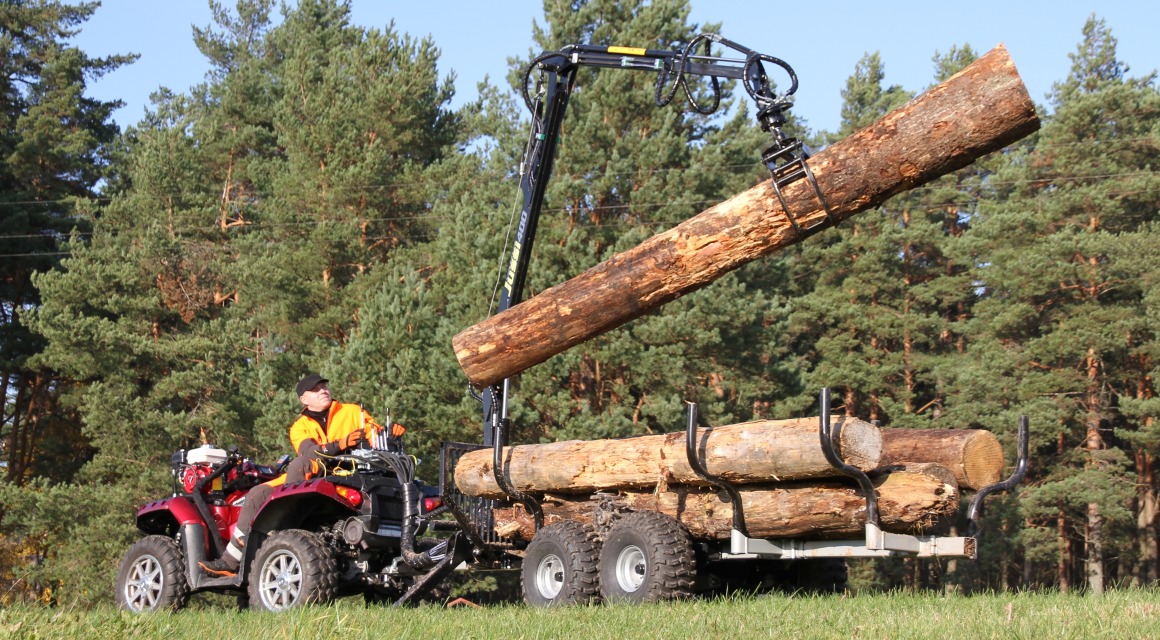 We will tell you more about the pros and cons of single and double ATVs in the article.
We will tell you more about the pros and cons of single and double ATVs in the article.
It is dangerous to ride two-seat ATVs together. The front part begins to bounce even on pits and bumps, and when you try to overcome the rise, there is a big risk of rolling over. This happens because the passenger's center of gravity is above or behind the rear axle.
On two-seater models, the driver and passenger are "inside" the wheelbase, thereby reducing the risk of rollover.
Manufacturers try to pass off some single-seat ATVs as two-seat ones, for which they put an extra seat. Such models are called "one and a half". It is just as dangerous to ride two of them as it is on ordinary single-seat models. You can calculate the "lorry" by the wheelbase - for full-fledged double models, it cannot be less than 1440 mm.
A single-seat ATV is 15-30 cm shorter than a two-seat one by 15-30 cm, which simplifies maneuvering in dense forest and reduces the turning radius. The weight of single models, as a rule, does not exceed 400-410 kg - even in the case of "liter" models. Light weight improves mud traction and acceleration dynamics.
The weight of single models, as a rule, does not exceed 400-410 kg - even in the case of "liter" models. Light weight improves mud traction and acceleration dynamics.
Because of the short wheelbase, a single-seat quad is prone to roll over on hills – even when riding alone. This is especially critical for a beginner who, due to lack of experience, will not be able to transfer body weight in time and accurately work with gas. Also, a short wheelbase worsens stability at high speeds, the ATV rolls more in corners.
The long wheelbase provides the 2-seat ATV with high longitudinal stability - it reduces the risk of rollover on steep inclines or descents. Also due to the length of the wheelbase, it is more stable at high speed.
When riding a two-seater ATV, the passenger does not slip onto the driver and does not “peck” him with the visor of the helmet, he can comfortably stand up on the steps when driving through potholes and bumps.
In theory, the geometric cross-country ability of two-seater ATVs is worse than that of single-seat ones, due to the longer wheelbase. In practice, two-seater models roll over logs, fallen trees and other obstacles more easily. It is also easier for them to overcome a deep ditch or ravine - models with a short base in similar conditions try to stand on their hind legs and somersault back.
Another advantage of two-seat ATVs is capacity. In the passenger seat, you can, for example, put a fuel canister.
A two-seat ATV is less maneuverable than a single-seat ATV. In the narrowest places, in order to choose a good trajectory, you have to back out. This can be critical for athletes who count every second.
A single-seat ATV is a great choice for racing. Compactness will save time when passing through narrow spaces. A small mass has a positive effect on acceleration, allowing the equipment to better “pull” in the mud and fail less.
For other purposes, it is better to choose a two-seater ATV. The long wheelbase reduces the risk of rollovers on hills and allows for safer cornering at high speeds. When passing logs and other obstacles, there is less chance of hanging on the bottom - the equipment easily rolls over them. The passenger does not interfere with the driver, he has his own full-size steps and a comfortable seat. When driving alone, the passenger seat can accommodate additional cargo or a canister of gasoline. The difference in cross-country ability with a single-seat ATV will not be obvious to most.
All CFMOTO ATVs are full two-seat models that can comfortably fit driver and passenger. They are also distinguished by reliable components and a 2-year unlimited mileage warranty.
The best news for potential ATV buyers is that there are more ATV options than ever before, which means you can get the perfect machine for your riding style and intended use. However, the wide selection makes it difficult to choose options.
However, the wide selection makes it difficult to choose options.
Buying an ATV is a major investment and should not be taken lightly. Because modern four-wheelers tend to have good durability, they will last for several years.
With a little research, you can head to the dealership fully armed with the information you need to select the right ATV for your needs. Your ultimate goal should be to buy a machine that is not only perfect for you and easy to ride, but also has enough power for your needs, a comfortable suspension system, an appropriate "thrill factor" and all the features you'll need. . having to do some household chores.
Most ATV models can be classified into one category, although there are many models that, due to certain features, fall into more than one classification. In fact, the lines between some categories have begun to blur in the last decade as almost all manufacturers have developed their utility models with significantly higher performance for those riders who want the complete ATV experience (work and play) from one machine.
Youth ATVs are basically smaller, lighter and less expensive versions of adult models. Almost all of them are designed for play and recreational trips with the family, but some models can be quite competitive in youth racing in standard form.
There are a number of lesser known brands in this category offering mini machines, many of which are designed and manufactured overseas. As a result, price ranges and quality differences tend to vary more than in other categories. Engine displacement varies from 50 to 125 cubic meters.
ATV Helmet Shop
This class is the next step up from youth models in terms of size and price. Some also refer to this category as the "recreational trail class". These cars are designed to be easy to drive, with fairly modest handling and powertrains. Some cars are equipped with an automatic transmission, while others require a gear shift but no clutch.
These cars are a great starting point for people who have never driven an SUV before.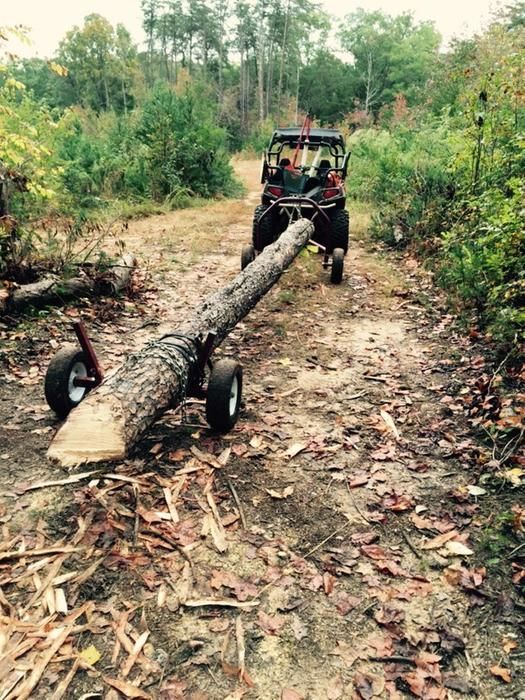 Another group of riders who prefer ATVs in this class are those who are physically smaller than typical adult riders who prefer to keep their speed at a laid-back pace. However, difficult driving situations, such as navigating large mud marshes or boulder fields, quickly put these machines beyond their capabilities.
Another group of riders who prefer ATVs in this class are those who are physically smaller than typical adult riders who prefer to keep their speed at a laid-back pace. However, difficult driving situations, such as navigating large mud marshes or boulder fields, quickly put these machines beyond their capabilities.
Utility ATVs, by definition, are designed primarily for heavy-duty work, such as hauling loads on the front and rear racks, towing a trailer or farm implement, or pushing a plow blade. That's why these machines have become so popular with people who own large tracts of land.
A number of industries, law enforcement and maintenance personnel also use this type of ATV, and since its introduction in the mid 19In the 80s they were the favorites of hunters, tourists and fishermen.
Utility ATVs were generally considered hulking behemoths with slow but powerful engines and limited suspension travel. But that has changed. Today, versatile four-wheelers are built to be fun and comfortable on the trails.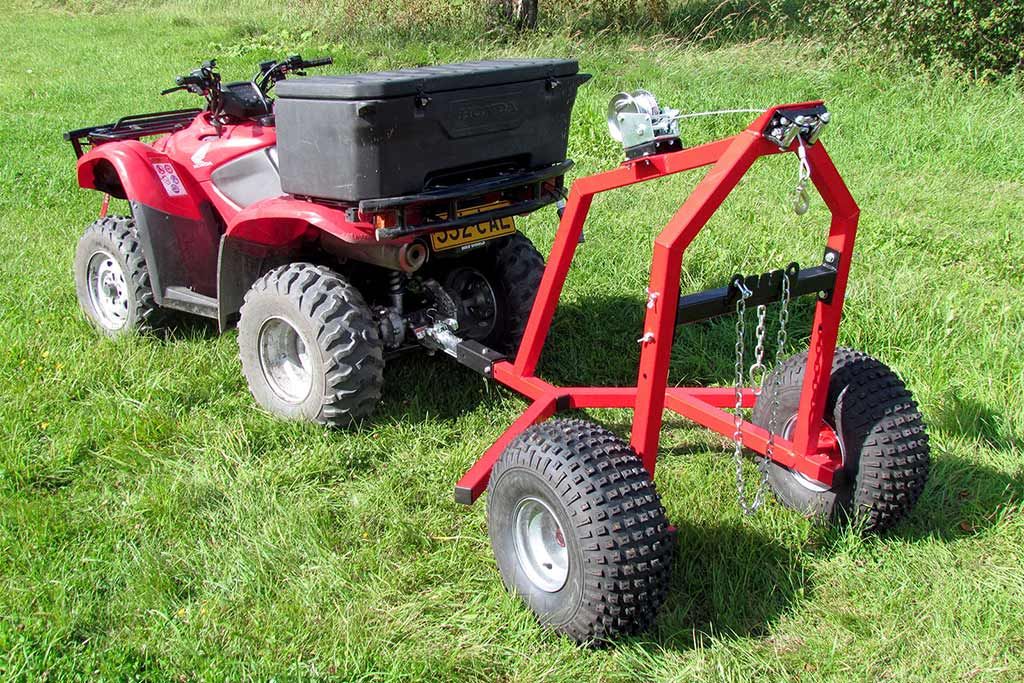 When going gets tough in mud, rocks, or steep climbs, modern utility quads usually pass like champs. They have high ground clearance and excellent traction.
When going gets tough in mud, rocks, or steep climbs, modern utility quads usually pass like champs. They have high ground clearance and excellent traction.
There are also dozens of extra features found on versatile ATVs such as storage boxes, extra electrical outlets, detachable headlights, independent rear suspension and liquid-cooled engines.
The sport utility vehicle category has probably done more than any other to increase the popularity of four-wheelers. These machines combine the performance capabilities of utility ATVs with the sporty performance of high performance and racing ATVs. Because of their flexibility, these machines come in a wide range of models offered year after year and are often bestsellers.
Sport ATVs can be thought of basically in two different ways: You can describe them as sports machines with racks, a trailer hitch and all-wheel drive, or you can say they are ATVs with faster engines and suspension with more long run.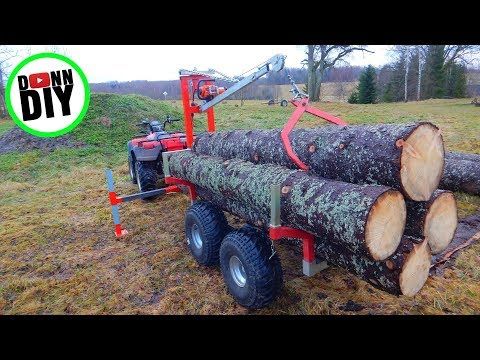 In fact, if you look under the skin of many of these SUVs, you'll find that manufacturers actually based their original designs of these ATVs on pre-existing sport or utility models.
In fact, if you look under the skin of many of these SUVs, you'll find that manufacturers actually based their original designs of these ATVs on pre-existing sport or utility models.
The best part about these machines is that you can literally spend the morning mowing the lawn with your quad bike and then take the same machine for a quick cross-country day ride over jumps and creating big slides.
ATV Tire Shop
The machines in this category were created with one goal in mind: fun! Sport ATVs typically feature powerful engines, long travel suspension, relatively light overall weight, and excellent handling both on and off the track. Sports four-wheelers are great at jumping, hitting bumps, sliding around corners, and wheel jumping. Experienced riders can fly the trails at a fast pace, which keeps them on their toes and gives them plenty of exercise.
Sport ATVs also have a sportier and more aggressive look than utility or sport ATVs.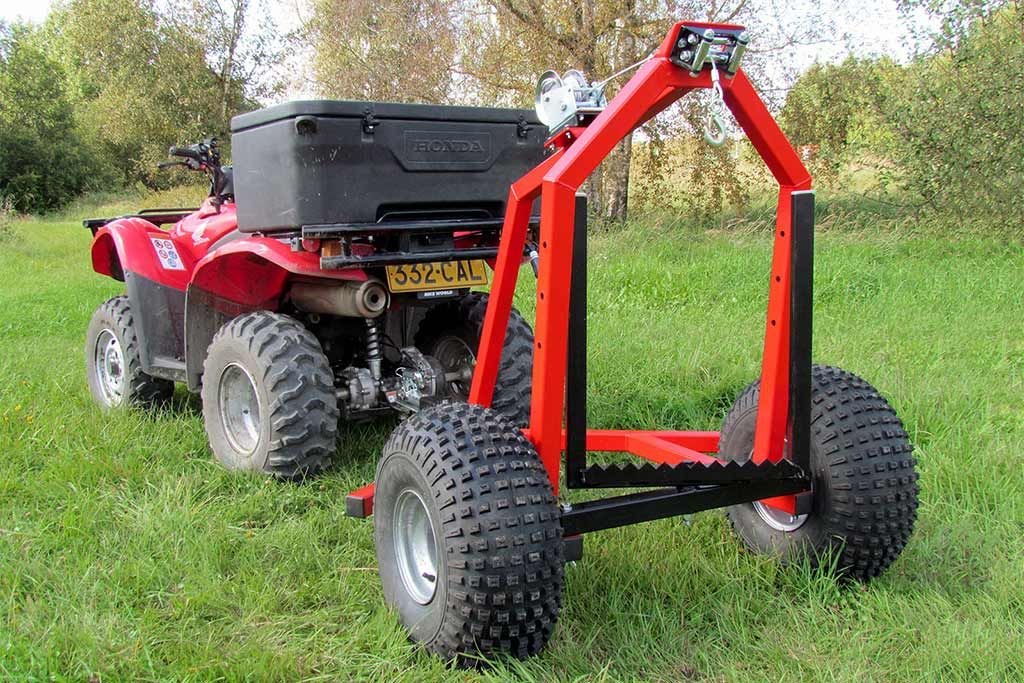 In fact, modified sport quads are popular in the beginner classes of motocross and TT racing, and can be used in almost standard cross-country racing.
In fact, modified sport quads are popular in the beginner classes of motocross and TT racing, and can be used in almost standard cross-country racing.
Most sports four-wheelers rely on a five-speed manual clutch transmission. This makes them more difficult to drive than automatic models, but in the long run the shifting skills you learn from riding them will come in handy if you ever want to race or upgrade to a performance car. .
This class has declined significantly over the past few years, but there are plenty of options in the used car market.
Two-seat ATVs began to appear on the market in 2002. Canadian manufacturer Bombardier, now Can-Am, was the first to introduce this type of ATV, and Arctic Cat and Polaris followed suit.
Two-seat ATVs usually have a slightly longer wheelbase for added stability, a second slightly raised seat with passenger rails, and a second set of floorboards or footpegs.
ATV Boot Shop
To prevent engines from overheating, air cooled powerplants rely on the simple and age old method of mounting external cooling fins directly onto the cylinder.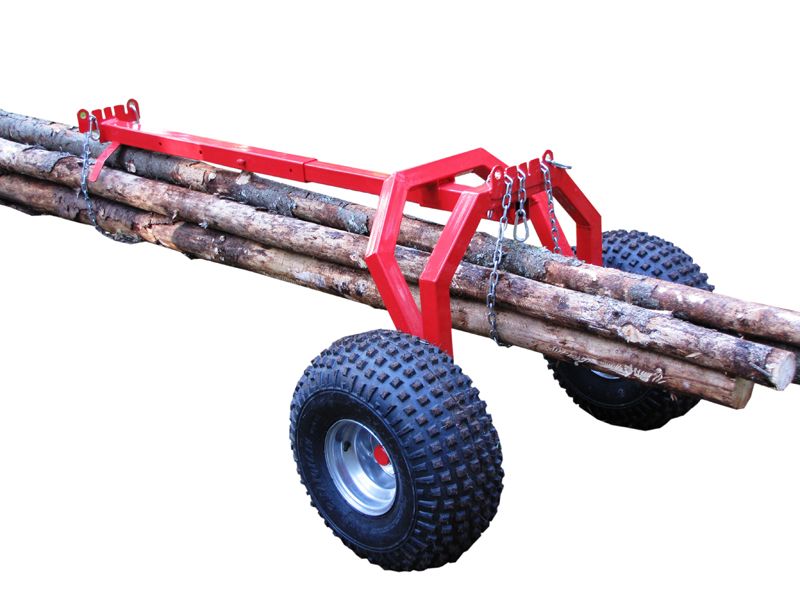 The engines are usually located in the ATV so that as much air as possible passes through the cooling fins while the ATV is in motion.
The engines are usually located in the ATV so that as much air as possible passes through the cooling fins while the ATV is in motion.
Liquid-cooled systems (also known as water-cooled, although the coolant is actually a mixture of antifreeze and water) are much more effective in keeping the engine cool. The system works by supplying coolant from a frame-mounted radiator to hollow channels surrounding the cylinder. It's almost the same as in cars. Many ATVs also have an auxiliary fan that blows over the radiator for extra cooling. The fan is useful when the ATV is moving at low speeds, such as when mowing the lawn or operating farm implements.
A colder engine is better for several reasons. First, the power supply remains stable and strong; secondly, the overall service life of the engine increases, as well as the time interval between overhauls. Overheated engines stress parts and reduce the effectiveness of motor lubricants. Also, a hot ATV engine can be quite annoying for the rider, especially when your ATV is radiating heat directly onto your feet.
The vast majority of sport and utility ATVs are now equipped with electronic fuel injection (EFI), similar to systems used in cars. One of the most notable benefits of EFI is the absence of a manual choke, eliminating trouble starting in cold weather or when the engine is overheating. With EFI, computer sensors tell the system how much fuel to send to the carburetor, allowing the engine to run at full speed even with extreme changes in altitude or temperature.
Single cylinder engines have powered the vast majority of four wheelers for many years, but two cylinder ATVs are now readily available. The first two-cylinder ATV was the Kawasaki Prairie 650, released in 2002.
The advantage of a two-cylinder engine is that it delivers more power than a single-cylinder engine of the same displacement. They also spin faster than a single. However, two-cylinder engines are significantly larger and heavier.
Most four wheelers sold today are equipped with a fully automatic transmission. They are literally as simple as driving a car. Most of them consist of an adjustable clutch and a belt drive system similar to that used on snowmobiles. However, some manufacturers have taken the other direction with their automatic transmissions by developing complex internal gear driven systems. Gear driven systems are slightly heavier and more expensive to manufacture, but they are also more reliable and do not flood when going to greater depths. In summer, belt drives also radiate quite a lot of heat.
Modern ATVs use two types of manual transmissions: traditional five or six speed manual transmissions or an automatic clutch system. The manual clutch is used on almost all racing ATVs and dirt bikes.
With this clutch you shift with your left foot and your left hand controls the clutch; the advantage is that you can precisely control engine speed and thrust. It requires a certain amount of skill, but this is the reason experienced trail riders and racers prefer this automatic transmission setup.
It requires a certain amount of skill, but this is the reason experienced trail riders and racers prefer this automatic transmission setup.
Chain driven ATV systems have two advantages over cardan driven systems: they are lighter and cheaper to manufacture. You can also change the overall gear ratio fairly easily by swapping out the front or rear sprocket, but this is usually only a problem for riders.
However, chain drives require more maintenance (chain tightening and chain and sprocket replacement) and lower ground clearance. As a result, they are particularly vulnerable to extreme muddy or rocky conditions.
Shaft-driven ATVs require virtually no final drive maintenance. Almost all modern 4x4 quads have a driveline front and rear, as do most off-road vehicles. Most sport ATVs use a chain drive.
ATV rear suspension systems can be divided into two main categories: single shocks, straight axle swingarms, and fully independent single or double A-arms. An independent system is commonly referred to as IRS (Independent Rear Suspension). The generalization is that most sport and performance quads use a swingarm and a straight axle, while most utility and sport quads have IRS. Very few of the children's ATVs and entry-level budget cars are equipped with the IRS system (which determines the weight and cost of the car).
An independent system is commonly referred to as IRS (Independent Rear Suspension). The generalization is that most sport and performance quads use a swingarm and a straight axle, while most utility and sport quads have IRS. Very few of the children's ATVs and entry-level budget cars are equipped with the IRS system (which determines the weight and cost of the car).
With IRS, each rear wheel moves independently of the other, just like the front wheel. When overcoming large obstacles, the IRS system keeps the ATV more level and stable than if it had a straight axle. When going down the trail, the IRS quad almost always delivers a smoother ride. The downside is that the IRS quad loses some of its finesse in corners.
Most ATVs today are equipped with superior disc brake systems. Simply put, they stop better, last longer, and perform much better in muddy and wet conditions. In winter, you won't have problems with the discs freezing, and the drum brakes can get water in them, which will freeze after you put the car away.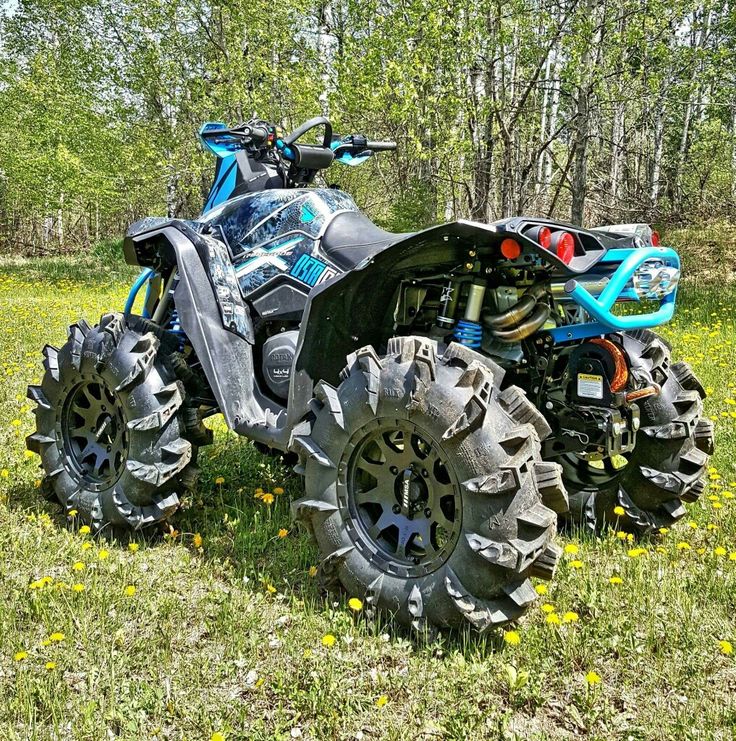 In the early days of ATVs, disc brakes were reserved for high-performance machines, but many utility and sport machines now have them as well.
In the early days of ATVs, disc brakes were reserved for high-performance machines, but many utility and sport machines now have them as well.
The big question many ATV buyers have is whether to get two wheel drive or four wheel drive. It basically comes down to how extreme the terrain you will be using it in. 4WD quads can handle muddy areas much better, climb steep hills, and get over big obstacles like logs and rocks. and navigation in deep waters. 4WD ATVs can also clear more snow, carry more cargo, and pull larger farm implements and trailers.
Almost every 4WD ATV has a button that allows the operator to switch between 2WD and 4WD on the fly. Some ATV 4WD systems have sensors that automatically switch the ATV into 4WD mode when it feels the need for front wheel drive.
Almost all 4WD ATVs are equipped with a limited slip front differential that shares power with the wheel that needs it most (which gets traction) rather than the spinning wheel (perhaps in the air).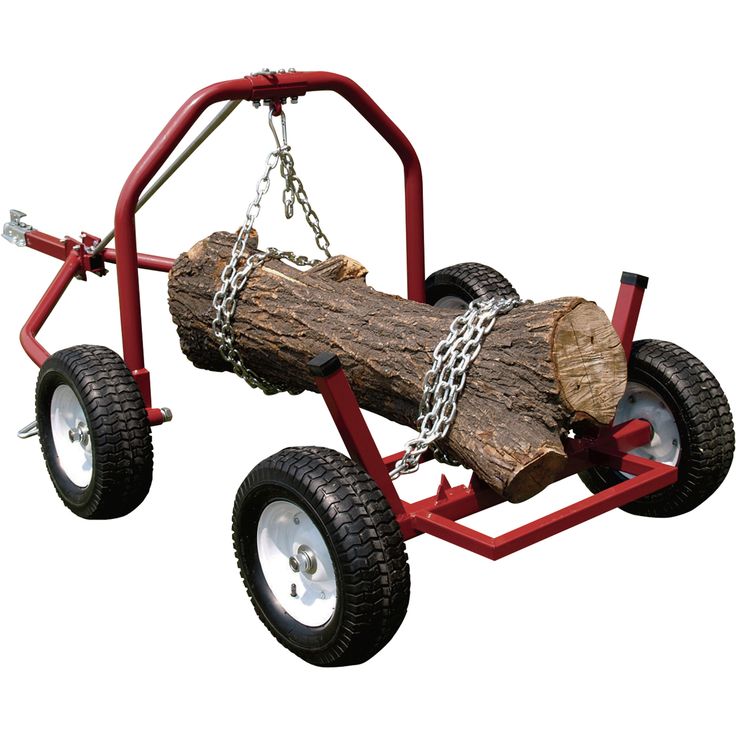 ), spins wildly, like a car with an "open" differential. One step above limited slip is a torque-sensing differential that transfers power to the wheel even better for the most traction.
), spins wildly, like a car with an "open" differential. One step above limited slip is a torque-sensing differential that transfers power to the wheel even better for the most traction.
A feature that you may see on a 4x4 ATV with either of the two differentials above is a front differential lock. This is used when the rider is in a situation where he or she could get stuck, usually in deep, thick mud. Enabling this feature gradually “locks up” the two front wheels and gives them both full power to get out of the situation. So, if a locked front is best for extreme terrain, why not always leave it locked? Well, steering gets extremely complex, which is why most 4x4s run in limited slip or torque-sensing mode most of the time.
Electronic Power Steering (EPS) is not available on most Utility and Sport-Utility ATVs. It's expensive (about $1,000 for a new car), but it saves your arms and shoulders a lot of stress over a long day of driving.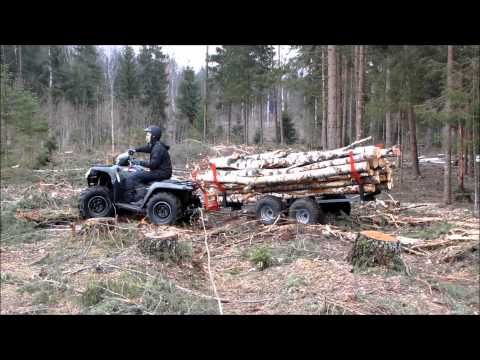
Buying a used ATV can save you a lot of money. However, given the nature of off-road driving, many used ATVs will suffer a lot before they show up in ads.
With that in mind, always figure out how much you need to spend to get a used ATV in good and reliable condition. Take the following checklist with you when you go to inspect a used car.
 If the gear lubricant looks like chocolate milk, the oil is contaminated with water, which can damage the bearings.
If the gear lubricant looks like chocolate milk, the oil is contaminated with water, which can damage the bearings. 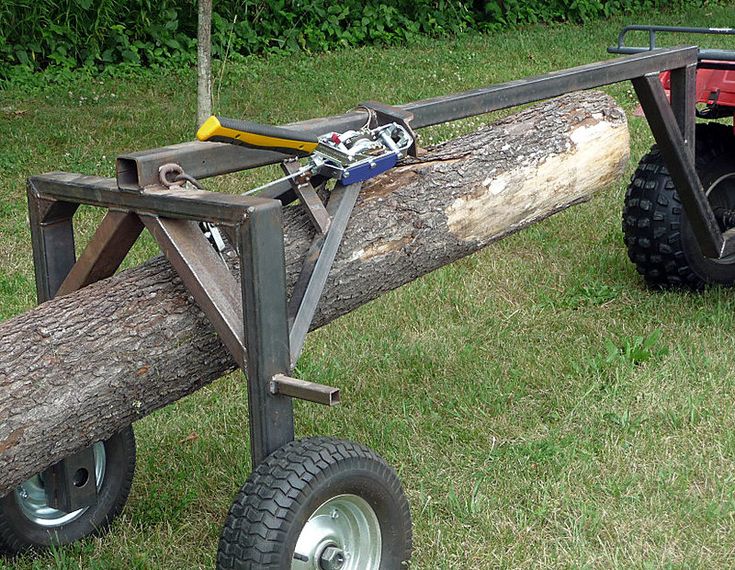 Check cables for damage or cracks.
Check cables for damage or cracks. 